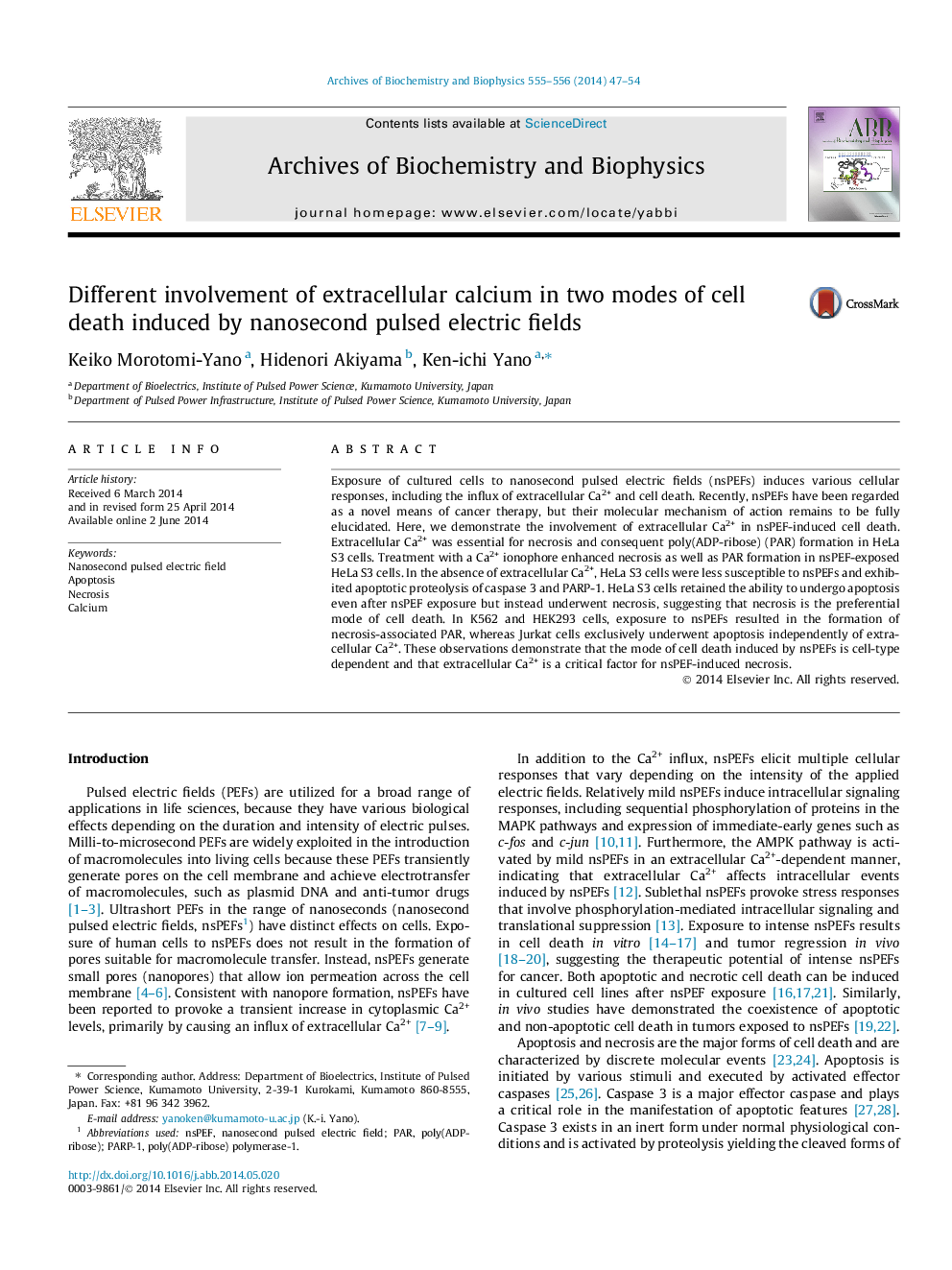| Article ID | Journal | Published Year | Pages | File Type |
|---|---|---|---|---|
| 1925145 | Archives of Biochemistry and Biophysics | 2014 | 8 Pages |
•Nanosecond pulsed electric fields (nsPEFs) are a novel means for cancer therapy.•Exposure of HeLa S3 to nsPEFs induced necrosis in a Ca2+-dependent manner.•In the absence of extracellular Ca2+, intense nsPEFs induced apoptosis in HeLa S3.•Either apoptosis or necrosis was induced by nsPEFs in a cell type-dependent manner.•These results provide important insights into nsPEF actions.
Exposure of cultured cells to nanosecond pulsed electric fields (nsPEFs) induces various cellular responses, including the influx of extracellular Ca2+ and cell death. Recently, nsPEFs have been regarded as a novel means of cancer therapy, but their molecular mechanism of action remains to be fully elucidated. Here, we demonstrate the involvement of extracellular Ca2+ in nsPEF-induced cell death. Extracellular Ca2+ was essential for necrosis and consequent poly(ADP-ribose) (PAR) formation in HeLa S3 cells. Treatment with a Ca2+ ionophore enhanced necrosis as well as PAR formation in nsPEF-exposed HeLa S3 cells. In the absence of extracellular Ca2+, HeLa S3 cells were less susceptible to nsPEFs and exhibited apoptotic proteolysis of caspase 3 and PARP-1. HeLa S3 cells retained the ability to undergo apoptosis even after nsPEF exposure but instead underwent necrosis, suggesting that necrosis is the preferential mode of cell death. In K562 and HEK293 cells, exposure to nsPEFs resulted in the formation of necrosis-associated PAR, whereas Jurkat cells exclusively underwent apoptosis independently of extracellular Ca2+. These observations demonstrate that the mode of cell death induced by nsPEFs is cell-type dependent and that extracellular Ca2+ is a critical factor for nsPEF-induced necrosis.
